11 Types of Magnifying Glasses (with Pictures)
Last Updated on
To many people, magnifying glasses are straightforward and simple devices. Even so, there are many different types of magnifying glasses designed for specific purposes. Knowing about the different magnifying glasses can help you select the best tool based on the task at hand.
Below, learn about 11 types of magnifying glasses and how to use them.
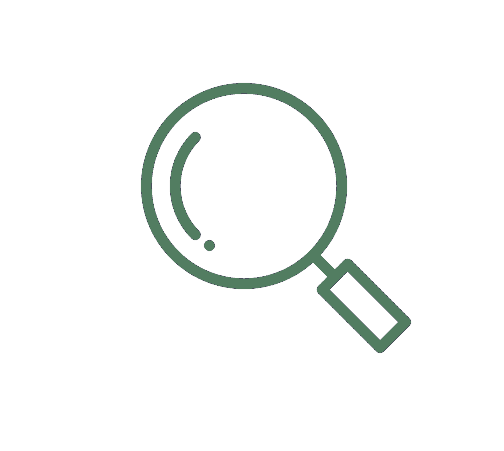
The 11 Types of Magnifying Glasses
1. Bar Magnifiers

| Notable Feature: | Bar design |
| Best For: | Reading |
Bar magnifiers have a bar-like design. They lie flat on a flat surface, and they are the width of about one or two lines in a book. As a result, bar magnifiers are often used in reading contexts. Some also have feet so that the magnifier is raised a few inches above the reading material. As you read the line, adjust the bar magnifier so that you can specifically magnify the text you are reading.
2. Binocular Magnifiers

| Notable Feature: | Wearable around head and neck |
| Best For: | On-the-go use |
Binocular magnifiers are a specific type of hands-free magnifier. Often, binocular magnifiers are worn around your head. You can use these magnifiers alone, or you can wear them with other prescription and safety eyeglasses. Some binocular magnifiers have additional features, such as an adjustable headband or flip-up frame.
3. Dome Magnifiers
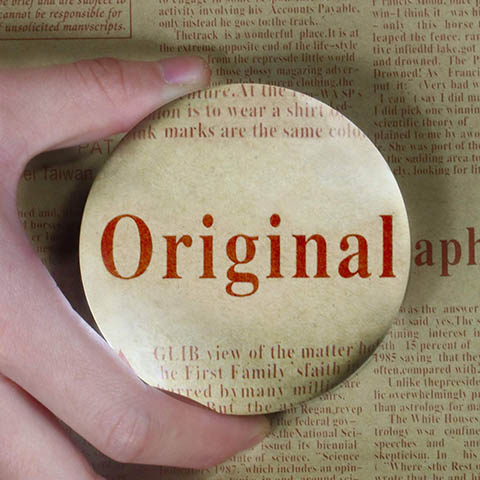
| Notable Feature: | Dome shape |
| Best For: | Reading, seeing small items vertically |
Dome magnifiers are named after their notable shape. They have a spherical shape, but the bottom of this sphere is flat. This flat bottom allows you to place the dome magnifier on a reading surface. You can also use the item vertically for items you find difficult to see, such as threading a needle. Dome magnifiers are sometimes called globe magnifiers.
4. Fresnel Magnifiers
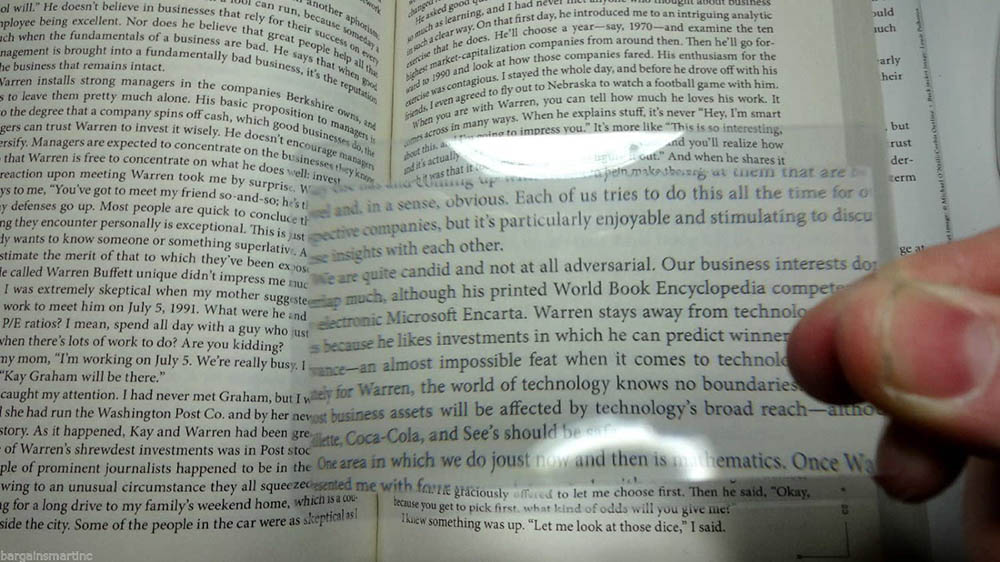
| Notable Feature: | Flat design |
| Best For: | Seeing a lot at once |
Fresnel magnifiers are thin, flat, and rectangle shaped. They can either have a frame or be completely frameless. Some may have a handheld design, whereas others have a stand. No matter how the Fresnel magnifier is made, it is typically useful for viewing a large amount of text at one time, such as with maps, puzzles, books, or telephone directories.
5. Handheld Magnifiers
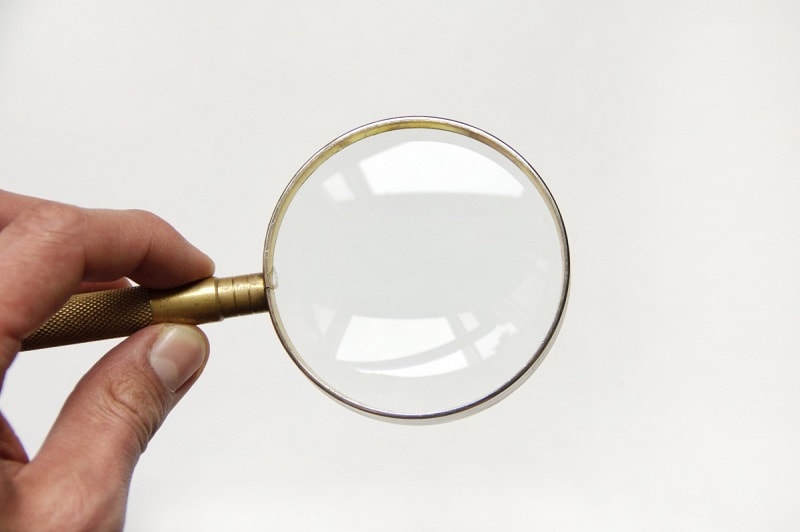
| Notable Feature: | Handle |
| Best For: | Versatile use |
When many people imagine a magnifying glass, it is a handheld magnifier that comes to mind. Handheld magnifiers are pretty self-explanatory. They come in round or rectangular shapes, and there is often a handle so that you don’t have to get the glass dirty. Handheld magnifiers can be used for a variety of purposes.
6. Magnifying Lamps

| Notable Feature: | Flexible arm |
| Best For: | Adjustable viewing |
Magnifying lamps have many features, such as adjustable magnification levels, illumination levels, light bulbs, and color emission. Often, magnifying lamps are attached to a flexible arm so that you can move the magnifying lamp as needed. It’s often moved over reading materials, but it is used for other purposes as well.
7. Pendant Magnifiers
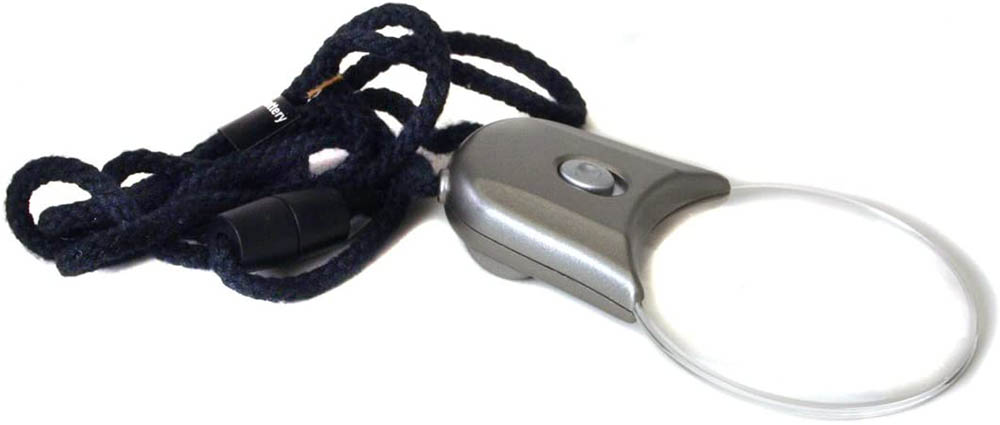
| Notable Feature: | Necklace chain |
| Best For: | Frequent use |
Pendant magnifiers are worn like a necklace. The magnifier is around a chain that is then worn around your neck. The benefit of pendant magnifiers is that you can always have the magnifier at hand. Whenever you don’t need the magnifier, just allow it to fall against your chest. When you need it, pick it back up.
8. Pocket Magnifiers

| Notable Feature: | Portable case |
| Best For: | On-the-go use |
Pocket magnifiers are designed so that you can always have a magnifier on your person. These magnifiers are built in a hard plastic case that can open or close. This allows you to keep the pocket magnifiers safe, even when you are out and about. Sometimes, pocket magnifiers can have additional features, such as illuminated models.
9. Stand Magnifiers
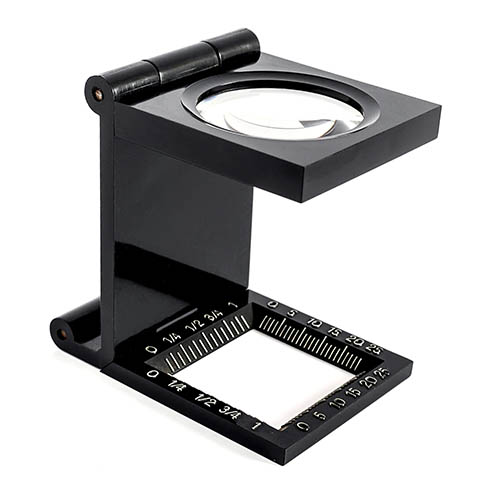
| Notable Feature: | Located on stands |
| Best For: | Those with shaky hands |
Stand magnifiers are put inside holders that have small legs or other supports. The idea behind the stand magnifier is that you can set the magnifier over an item and simply tilt the magnifier as you change directions. Stand magnifiers are also helpful for individuals who do not have steady hands and need a magnifier to stay still on its own.
10. Hands-Free Magnifiers

| Notable Feature: | Hands-free design |
| Best For: | Those who need to work with their hands |
Hands-free magnifiers do not require you to hold the magnifier during use. There are quite a few hands-free designs, some being binocular magnifiers and others being magnifying lamps. These magnifiers are great if you want to work with your hands and need your hands free. Hands-free magnifiers are sometimes more expensive due to their convenient design.
11. Digital Magnifiers
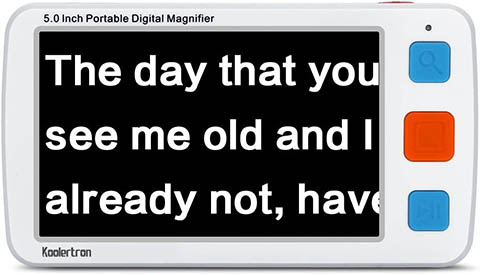
| Notable Feature: | Digital |
| Best For: | Digital viewing |
Finally, the last type of magnifying glass is the digital magnifier. A digital magnifier will typically expand a digital screen. Some examples of digital magnifiers include screen magnification software, portable video magnifiers, and desktop video magnifiers.

How to Decide Which Magnifying Glass Is Best for You
Because there are so many magnifying glasses available, it’s important to consider the right magnifier for your purpose. When deciding on the magnifying glass, here are some factors to consider to make sure you get the right one:
Intended Purpose
How you intend to use the magnifying glass makes a huge difference in which item to select. For example, a bar magnifier may be great if you are reading, but you might want a pendant magnifier if you need some help on the go.
Additional Features
Some magnifying glasses come with additional features. Consider what sort of features will be convenient for you. For example, you might want a hands-free or illuminated magnifying glass, depending on what you’re doing.
Comfortability
Make sure that the magnifying glass is comfortable for your eye. There should be anti-reflection coatings, appropriate eye relief, and an appropriate magnification for the job. Focusing on comfortability will help to ensure the magnifying glass you get is usable.

In Conclusion
As you can see, there are quite a few magnifying glass types available. Select a magnifying glass for you based on your intended purpose. From there, look at additional features and comfortability to ensure the magnifying glass you get is perfect from all angles.
Featured Image Credit: Agence Olloweb, Unsplash
About the Author Robert Sparks
Robert’s obsession with all things optical started early in life, when his optician father would bring home prototypes for Robert to play with. Nowadays, Robert is dedicated to helping others find the right optics for their needs. His hobbies include astronomy, astrophysics, and model building. Originally from Newark, NJ, he resides in Santa Fe, New Mexico, where the nighttime skies are filled with glittering stars.
Related Articles:
Monocular vs Telescope: Differences Explained (With Pictures)
How to Clean a Refractor Telescope: Step-by-Step Guide
How to Clean a Telescope Eyepiece: Step-by-Step Guide
How to Clean a Rifle Scope: 8 Expert Tips
What Is a Monocular Used For? 8 Common Functions
How to Clean a Telescope Mirror: 8 Expert Tips
Brightfield vs Phase Contrast Microscopy: The Differences Explained
SkyCamHD Drone Review: Pros, Cons, FAQ, & Verdict
